Updated: January 9, 2023
What Happens If Your Water Softener Runs Out Of Salt?
Why was the soap not lathering up when I was in the shower? What are those white spots on the shower door? And where did that orange stain in the kitchen sink come from? OH NO, I let the water softener run out of salt, is it ok?
When a water softener runs out of salt, it will no longer have the ability to regenerate its water-softener resin. This means that the resin will no longer be able to remove hard ions and iron from your water which will result in hard water and iron staining where your water settles on surfaces.
Many people will tell you that letting your water softener run out of salt is no big deal and that you should just add salt and forget it. But letting your water softener run out of salt can cause long-term damage to your water fixtures and it could even result in your salt tank overflowing.
No salt in your water softener means more than just no soft water, it can cause problems with anything that your water makes contact with and even damage your water softener!
Immediate Problems If You Let Your Water Softener Run Out Of Salt.
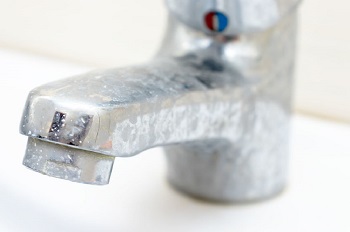
A white chalky-looking stain will soon develop on your water faucets and showerheads that do not come off easily and may only come off if you use a hard water stain remover.
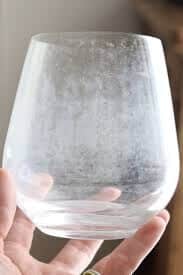
A hazy film will gradually appear on glass, mirrors, and walls exposed to the water coming out of your showers.
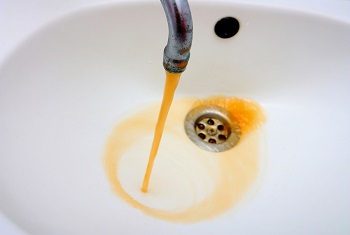
Yellow, orange, and brown stains will begin to show around sink and shower drains and anywhere water settles.
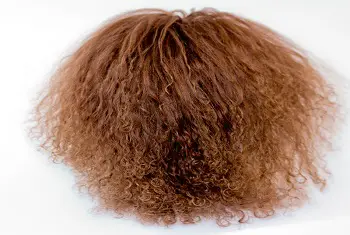
Your hair will feel stiff and brittle because of the hard minerals in your water.

Your skin may become red and irritated due to hard minerals settling on your skin after using water.
Long-Term Problems If You Let Your Water Softener Run Out Of Salt.
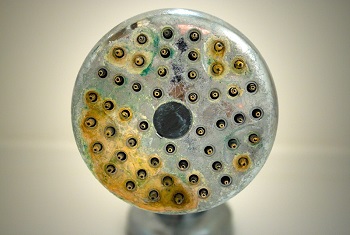
Hard minerals will gradually build up in the openings of your showerheads causing reduced water pressure and water spraying in all directions.
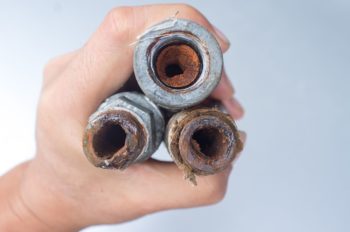
Hard mineral build-up inside of a hot water heating system can cause poor hot water pressure and make your hot water heater less efficient.
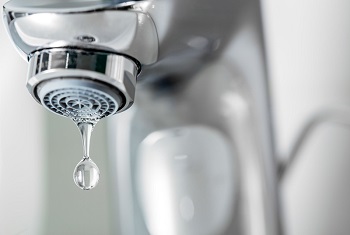
Hard minerals can build up at your home’s plumbing connections like where your water enters a sink faucet or toilet connection causing progressive loss of water pressure.
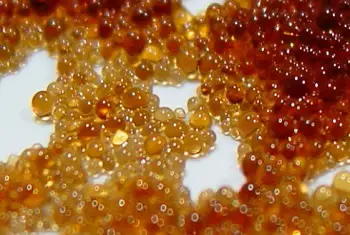
Without salt in your water softener to clear the hard ions from your water softener resin, the hardness can continue to build up to the point where the water softener resin will no longer be able to be properly regenerated.
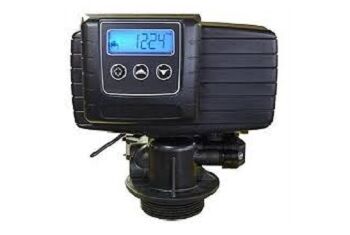
Many water softeners use water that has already been softened through their control valves to ensure that iron and hard minerals will not build up on the moving parts that make the control function.
No salt in your water softener will mean that untreated water will flow through your water softener control valve and may potentially stop working.
So Your Soap Won’t Lather Up As Nicely As Usual. No BIG Deal Right?
It Could Be A VERY Big Deal!
When your water softener runs out of salt, it will not be able to clean the hard minerals and iron from its softening resin.
This means that the water coming out of your water softener will contain hard minerals and you will likely get hard water and iron stains on surfaces that make contact with your water.

And there can be a whole lot more to it than that!
Hard water is much more than an inconvenience, it will build up in your hot water heating system, making it less efficient, and in time, it won’t heat your water at all.
Hard water can build up in the plumbing of your home, in time restricting the water flow throughout the home.
Your sinks and shower head may develop a white, crusty coating that will make the water spray in all directions and inhibit the water flow.
Your Water Softener Needs Sodium (Salt) To Clean Its Resin That Removes Hard Minerals From Your Water.
A Water softener uses sodium to perform a process called Ion Exchange.
This process removes hard minerals that have built up on the water softener resin that is contained in the water softener tank.
If your water softener runs out of salt, the water softener resin will not get regenerated (cleaned) and therefore it will not be able to remove more hard minerals from your water.
Check out this quick video about how your water softener needs sodium to regenerate its water softener resin.
Running Out Of Salt In Your Water Softener May Lead To Iron In Your Water.

If you have iron in your water supply, your water softener has probably been taking it out of your water because water softener resin will attract dissolved iron from your water to its surface providing that it has been regenerated using sodium ions.
When you let your water softener run out of salt, the resin beads will become completely coated with iron from your water over time, and the water softener resin will no longer be able to soften your water.
When this happens, the resin becomes useless and will need to be replaced. Read more about this in my article “Can Water Softener Resin Go Bad?”
No Salt In Your Water Softener Could Lead To Permanent Etching On Your Shower Door And Glassware.
If your water softener runs out of salt, the hard water that will be coming out of it will leave hard water stains on everything that it touches.
Your glassware will come out of your dishwasher with a white film on it that can be cleaned off at first but will become a permanent etch in the glass after just a short time. And your silverware will look like it never went through the dishwasher at all.
Your glass shower walls will start to look like they are frosted over from this white film, and they usually never get as clean as they once were, no matter how hard you scrub. And the replacement of a shower enclosure can be quite expensive.
I found that using a Shower Water Filter works great as a backup filter to help protect your shower from hard water stains.
The Brine Float In Your Salt Tank May Not Shut Off The Water Filling Your Brine Tank. (Your Salt Tank Could OVERFLOW!)
This is not as common as the other problems that can arise when you let your water softener run out of salt, but it might very well be the worst of them all.
This is much more common in non-electric water softeners than with electric ones because a non-electric water softener relies on a single water shut-off valve to stop water from filling your water softener’s salt tank.
Because the water softener salt that you put into the salt tank has some dirt in the bag with it, that dirt will settle to the bottom of the tank as the salt is dissolved for use in the water softener.
Hard Minerals And Iron May Get Into Your Water Softeners’ Control Valve.
With older water softeners, untreated water was used through the water softeners control valve and through the main chamber of the water softener where the main piston moves back and forth. This caused the piston to seize and the seals to wear quicker.
On most new models of water softeners, the water that goes through the control valve has already gone through the water softener, and therefore it is soft and free of iron.
If you let your system run out of salt, you may be letting hard minerals and iron get to your piston chamber and in the case of a non-electric water softener, you may be letting hardness and iron get on the delicate gears that control the system’s regeneration process.
Also, hardness and iron can build up on internal screens and your water softeners venturi. The venturi is what creates the vacuum to draw the brine solution from the salt tank.
If it develops build-up on it, it will no longer draw the brine solution and therefore your water softener will no longer be able to clean its softening resin bed, which means, no more soft water.
In any case, hard minerals and iron getting into your water softener’s control valve can lead to expensive repairs and premature replacement of your water softener.
What Happens When A Kinetico Water Softener Runs Out Of Salt?
If you let your Kinetico non-electric water softener run out of salt, any dirt that may be in the bottom of the salt tank will get stirred up when you add more salt to the water. When this happens, the dirt can get pulled into the shut-off valve and cause it to not close completely.
This seal between the shut-off stopper and the shut-off rubber seal is the only thing stopping water from flowing into your Kinetico water softener’s brine tank.
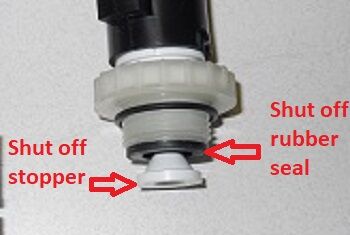
When this happens, the water softener has no way to know to stop filling the salt tank. This means the water will keep flowing into the tank and it will overflow.
The worst part about this is that you may not know this is happening for many hours. That can mean a lot of water getting all over the floor, and even several inches of water in your finished basement.
Newer Kinetico water softeners use softened water through their control valve to meter your water usage and control the regeneration process of the system.
If your Kinetico water softener runs out of salt and you have dissolved iron in your water, the dissolved iron will NOT be removed by the water softener resin.
This means that the iron can collect on the internal parts of the control valve which can cause it to stop working and require replacement or an expensive repair bill.
Ways To Make Sure That Your Water Softener NEVER Runs Out Of Salt.
You wouldn’t let your car run out of gas, would you?
Well treat your water softener the same as your car and keep an eye on its salt level.
Get yourself and other members of your family into a routine of always checking the salt tank whenever they pass it by.
Most family members will go past the area where their water softener is regularly. Get your family to simply lift the lid of your water softener’s brine tank whenever they pass the water softener.
When they notice that the salt level is below 1/3, tell them to add a bag of salt to it or at least tell you that the salt in the brine tank is low.
I also suggest keeping a few bags of water softener salt in a room far from the water softener.
This way, if you ever let your softeners salt tank get too low, you will have to carry the bags a long way to fill the tank, and since you probably don’t like the idea of having to do that, you will be more diligent about getting more salt when you find that you are running low.
If you are concerned that your water softener is adding too much salt to your drinking water, consider a recommended reverse osmosis drinking water system to reduce the salt in your water.
If you have let your water softener run out of salt, there could be a heavy build-up of hard minerals and iron inside of your water softener.
At this point, the water softener should be flushed out with a water softener cleaner, to remove excess hard minerals and iron.
Just pour the water softener cleaner into your water softener salt tank, and let the water softener regenerate as usual. Once the water softener has regenerated, it should be working at peak efficiency again.
We all forget to check our water softener salt from time to time. Always know when your water softener is out of salt before it creates a problem with this low salt alarm that I found on isopure.com.
Water Care (SD-100V-US) SALTDETECT® II Low Salt Level Alarm for Water Softeners; 110V – $86.99
from: IsoPure Water
To Sum Up!
Simply put, your water softener needs salt in order for it to function. Letting your water softener run out of salt can be no laughing matter, so don’t let it run out of salt.
If you have let your water softener run out of salt, don’t worry. But do get salt A.S.A.P. and add a packet of water softener sanitizer to help get your water softener working properly.
Get into the habit of topping your salt off whenever you see it getting low and you are less likely to let it run out. Salt in your brine tank means soft water for your home.


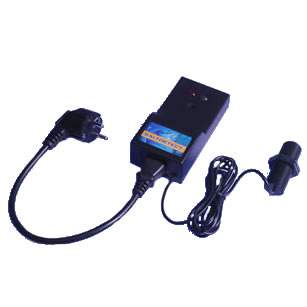
Why does my brine tank half full of water?
Hello John, and thank you for the question.
Most water softeners have water in the salt tank, but it normally should only be about 1/3 of the way up the tank. I think that your injector/venturi may be clogged. When this happens, your water softener will not use all of the brine from your salt tank. Then when the water softener adds water back into the tank, the level of the water will be higher than normal.
Check out my article Should There Be Water In A Water Softener Tank?
I hope this was helpful!
Paul
It’s Christmas afternoon and we see the salt level at the bottom. I’m sure it can’t hurt to wait until tomorrow to buy salt, right?
That should not be a problem, but you should get salt soon.
Thank you for the question.
Paul
Hi Paul, my brine tank is halfway empty so there’s dirt in the water.. I didn’t know I was supposed to keep the tank filled so this occurred. This is the first time it happened. Will it do any damage to my water softener and how do I fix this problem? Do I just clean it and refill it with salt? Thanks
Hello Stephanie, and thank you for the question.
In most cases, this is not a problem, the dirt that you see is most likely just dirt that has made its way into the tank from the salt that you put into it. Water softener salt crystals are mined from the earth and then given a quick rinsing. This still leaves some dirt in the salt which stays in your salt tank after the salt has dissolved, and been used to regenerate your water softener resin.
If you would like to, you could scoop out the majority of the salt and water, and then use a wet/dry vacuum to get any dirt left on the bottom of the tank. But I find that this is often not needed. You may want to use a towel or rag to skim off any dirt floating on the water and clean off the sides of the salt tank, but that should be enough.
If you have a non-electric water softener, dirt in the salt tank can cause the shut-off float to not shut off correctly, so call your service person to properly clean the brine float assembly. But an electric water softener should not have this problem.
For more details see my article How To Maintain Your Water Softener
There should be no damage done to your water softener, fill the salt tank to about 2/3 full, and don’t let it go less than 1/3 full in the future.
Hope this helps,
Paul
Thank you so much, Paul!
Hello, I am a Laundry Repairman. I have recently noticed a sand like substance in the screen filters on the water inlets. Plugging the screens. Also I have been replacing the water valves a lot in this particular location. I found out the owner doesn’t keep the softener with salt very often. They do go through a lot of water. This sand like substance is it a byproduct of the zeolite breaking down inside of the softener? Or do you think this could be coming from the main water from the city?
Hello Alan and thank you for the question.
If the sand-like substance that you are finding is an amber color, it may be the water softener resin. Municipal water is often treated with chlorine which will breakdown the Zeolite after prolonged exposure, but it usually will cause poor water pressure before it breaks down because the chlorine causes the resin beads to expand and restrict the water flow.
Of course, the sand may be coming from the water supply, but I would check to see if there is a build-up of dirt or sand in the bottom of the water softeners brine tank. When you add water softener salt to the brine tank, the salt often contains sediment that usually will stay at the bottom of the tank. But since you mentioned that the owner lets the salt run out often, the sediment in the bottom of the tank can get stirred up when the water softener regenerates. The sediment can work its way through the water softener resin and get into the plumbing of the home.
Installing an inline sediment filter before the water softener should catch the sediment if it is coming from the water supply. Check the water softeners’ brine tank and tell the owner to keep it filled. This will keep the sediment in the bottom of the tank from stirring up and getting into the water softener. Cleaning the existing sediment from the tank would also be recommended.
I hope this helps!
Paul
Hello
I made a big mistake and forgot to fill my tank with salt. My best guess is that it was empty for about a week. It is full now but doesn’t seem to be working. Before I call a repairman is there anything I can troubleshoot on my end?
Thank you so much
Shannon
Hello Shannon, and thank you for your question.
More than likely, your water softener is working just fine, it just hasn’t realized that it was out of salt. Because it was out of salt, it was unable to regenerate (clean) the hardness that has accumulated on its resin, and it still hasn’t.
Just because there is salt in the brine tank does not mean that the water softener has used any of it yet. You may still get hard water until the resin has been properly regenerated. I don’t know what kind of softener you have, but if you can manually regenerate it, it will regenerate its resin, and you should have soft water very soon.
The water softener does not know that it has regenerated without salt. Regenerate it manually once or twice, and I think that you will have soft water again. Adding a dose of water softener resin cleaner to your brine tank will help to get your resin as clean as possible.
I think your system will be fine, but be sure to keep the salt tank at least 1/3 full.
Hope this was helpful
Paul
recently, my water softener used a significant salt in a few days (the salt ran out) after I made some adjustments (don’t understand the manual; neither does my plumber); how do I fix this?
Hello Linda and thank you for the question.
It may depend on what model of water softener that you have. What is the brand and model of your water softener, what adjustments did you make, and how much more salt are you using? If you know your water hardness and if there is any iron in your water it will be helpful. I would be happy to help!
Paul
Hi Paul! I have a water softener installed. I was told to change out the filter for my fridge water dispenser. Is this true? Do I need to do anything or am I able to drink the water from the fridge dispenser just fine?
Hello Stephanie and thank you for the question.
A standard water softener will only remove hard minerals from your water to make it soft. It is not a filter. A standard refrigerator filter will filter out sediment and may improve the taste and odor of your water.
The water coming out of your water softener should be the same as it was before but without the hardness. I do not know all the characteristics of your water but it sounds like you do not need to do anything to get the same water as you had before except now it will be soft.
If you were to get a reverse osmosis drinking water system connected to your refrigerator, then you should not need the filter in the fridge and it may reduce the water flow coming from the fridge.
I hope this was helpful.
Paul
To make sure I understand you correctly, I don’t need to bypass or do anything to my fridge water dispenser just because I installed a water softener right? I’m just asking because the water from the fridge tastes a bit salty. Not sure if this is because of the water softener or I just need to change out the filter.
Hello Stephanie,
Yes, a water softener is not a filter, and a standard refrigerator filter will not reduce the amount of sodium in your water. The refrigerator filter is to help with odd tastes or odors in the water but does nothing for sodium. If your water is tasting salty but did not taste salty before getting your water softener, then the softener is not rinsing away the salt that it uses to regenerate its water softening resin.
If the salty taste continues, call your water softener installer to have them check your water softeners settings. Changing the filter in your fridge should not help with the salty taste.
If they can’t resolve the problem, let me know the brand and model of softener that you have, and I will try to help you myself.
Have a great day!
Paul
Hello
We recently converted to city water which is pretty good. I don’t need my water softner any longer. Is it a problem if I leave it connected and don’t fill it with salt?
Thanks
Pete
Hello Pete and thank you for the question.
If you are going to leave your water softener in place, I would recommend unplugging it and putting it in bypass mode. This will make sure that it does not use any water or potentially leak. When it is in bypass mode you will not need any salt in the system.
I hope this was helpful!
Paul
Thanks, Paul. One more question. If I have a water softener and a filter, which unit typically is first in line. Both units look identical.
Thanks
Pete
Hello again Pete and thank you for the great question.
This is a very common question and it all depends on what kind of filter it is and the characteristics of your water.
If you have a well and it is a backwashing filter for sediment coming from the well then it is usually before the water softener to prevent sediment from getting into your water softener. But sometimes it can be after the water softener as a polishing filter (a filter that is used to filter out anything that has gotten past another filter).
If it is an acid-neutralizing backwashing filter containing calcite, it should be before the water softener because the calcite will add hardness to the water. It could be a carbon filter for chlorine if you have municipal water that has been disinfected using chlorine, in that case, it should be before the water softener because the chlorine will damage the water softening resin.
Check out “Can Water Softener Resin Go Bad?
There are a few other types of filters that it could be but those are the most likely filters.
I hope this was helpful!
Paul
I read your article on preparing the softener for a long vacation. I am typically gone two months. I’ve never had a softener and it was only a month old before I left. I unplugged the electric softener so it did not regenerate while I am gone. I will check when I return about all the info you provided about bypasses and vacation pause, etc. The softener is in the well house outside. I did not shut off the well. Anyway, now that I have read this article, I’m wondering if I really screwed up. There was a half tank of salt when I unplugged it. What kind of mess will I be facing when I return next week? Have I damaged something inside the tank? Can I just plug the softener back in, add salt and reset the clock and schedule the regeneration and all be fine again? You educated me on bypassing now but when the softener is unplugged and no one is using water, has the hard water just set in the tank damaging something or am I ok? The installer has been zero help and resents questions. Thanks much.
Hello MaryAnn and thank you for the question.
I would say that your water softener should be just fine after two months. As long as there is no water being used, the water softening resin will not need to be regenerated.
Make sure to get your water softener up and running when you get home and it should be ok.
You might be interested in my article “What Happens If My Water Softener Runs Out Of Salt
I hope this was helpful!
Paul
Hi Paul,
My water softner ran out of salt. What was left in the brine tank is brown and stinks! I added salt and sani system sanitizer and rust out. Brine tank still stinks and so does the water from out taps. I am waiting for salt to go down and then I will wash the brine tank. I hope this works. How do I know if it is the softner or separate iron and sulphur remover that is the problem? Have manually regenerated a few times but doesn’t help. Would appreciate any advise.
Hello Robin, and thank you for the question.
The water that is inside of a brine tank is only used to regenerate the water softener resin in the water softener and then it is rinsed away. If you are experiencing odor from your faucets, it is most likely coming from somewhere other than the brine tank.
Putting a dose of sanitizer in your brine tank from time to time is a good idea but I think that the odor that you described is coming from before the water softener.
If you already have a sulfur removal system, I would regenerate it every day for 3-4 days to see if there is any improvement in the odor. If you find that the odor has gotten better after a few days of regenerating the sulfur system, you may need to have the sulfur system serviced or the carbon inside of the sulfur system replaced.
If you have a water filter housing before the entire system, you could also try adding about 1/2 (one half) of a cup of scent-free household bleach into the filter housing, then run the bleach through the systems by turning on a cold water faucet for just about 10 seconds so the bleach is inside of the sulfur system and then let the bleach sit inside of the system for an hour or so.
Then run the cold water for a few minutes to get rid of the bleach from the system. If this helps, you may want to call your local water treatment professional to give the sulfur system complete servicing including flushing out the system with hydrogen peroxide or chlorine shock.
I don’t think that it should be the water softener and if the iron system was not working, you would likely be seeing yellow or orange iron stains on your water fixtures.
I hope this helps.
Paul
Thankyou so much for your advice. I will do everything you suggest.
Take care,
Robin
Hi Paul
I am new to Arizona and the use of water softeners. I recently found out that I was supposed to be adding salt which I have never done for 18 months. What do I do? Obviously I need to start adding salt but you mentioned using a water softener cleaner and allowing to regenerate. Should I still do that and how do you know that it has regenerated?
Thanks
Barbara
Hello Barbara and thank you for the question.
I would add 2-3 bags of solar crystal water softener salt that is often in a blue or blue and white bag.
Unless you have iron or chlorine in your water, I don’t think that there should be any significant damage to the water softener resin.
Test your water for hardness and iron to determine what your water softener hardness should be set to and refer to your owners manual (search online for one if you can’t find the original) to set the hardness on the water softener and then regenerate the water softener after the salt has had a few hours to dissolve.
It may take a few regenerations for the water softener to be at top performance but I think that it should be fine.
It would be helpful to add a water softener sanitizer to give the resin a thorough cleaning.
I hope this was helpful.
Paul
Hello Paul,
A while ago I purchased a home that uses a water softener. I’ve never used one before and was unaware of the constant need to add salt. I hadn’t added any salt to the tank since I moved in, and I started seeing an orange sand-like substance coming out of my faucets today. It even seems to have clogged a faucet.
Is there anything I can/should do about the sand-like substance? Is this substance resin? I’ve since added salt to the water softener in hopes that it helps.
Hello Kyle and thank you for the question.
It is hard to be sure if your water softener is still operational and it may take some time for the water softener resin to recover if it is coated with hardness or iron.
It sounds like the orange substance might be water softener resin that has worked its way out of the tank.
Is it an orange/brown color that feels like tiny beads between your fingers?
If you have lost a small amount of resin from your system, it may still work just fine. Losing a few cups of resin does not mean that there is not still enough left in the tank to soften your water.
If you have municipal water that may have chlorine in it to disinfect your water, the chlorine may have damaged the resin, making it unable to soften your water any longer.
I would clear the resin from your faucets and check your toilet tanks for resin as well as it can sometimes settle in the storage tanks. If you do not find very much resin, keep adding salt to your water softener as needed and then test the water after a few weeks to see if it is soft.
If you find that it does not become soft after a few weeks, you may need to replace the resin but you might want to contact a local water treatment service company first to make sure that the rest of the water softener is still ok.
Hope this was helpful.
Paul
We are snowbirds who spent four months in Florida last winter. I had unplugged and bypassed the water softener before we left. When we returned home this spring, I restarted the system only to find that it was not softening the water. I discovered that a salt bridge had formed in the brine tank. I got it working again by scooping all the salt out and braking up the bridge. Is there a good way to prevent this from happening next winter when we leave again? Thanks!!!
Hello Mike, and thank you for the question.
Salt bridges often occur when the salt is high up in the brine tank and not used for a long period of time.
I suggest that you let the salt drop down to at least halfway down the brine tank when you can see water above the salt before bypassing the water softener.
If the salt is submerged in brine, a salt bridge should not occur.
See my article How To clear a water softener salt bridge for more information.
I hope this was helpful.
Paul